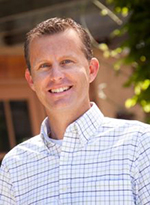Science Education Post-Election Update
By Camron King, CASE Executive Director

With the 2020 Election now behind us, there is more certainty around the direction of policy and legislative developments going forward, but there continues to remain a great deal of uncertainties too. This dichotomy seems to be endemic of the year in general, but also highlights the opportunities that could potentially lie ahead. The unknowns may beget the chance to think differently – about funding, about teaching, about priorities, about how we engage (with students, peers and as a society). The certainties, however, come in the forms of knowing the outcome and being able to begin to predict the pathways for the future as administrations form and leadership is identified.
So, what does this all mean for California? For education? For science? Sitting at this point and time in 2019, the current state of the world would have seemed inconceivable, but here we are. What we do know and can surmise is as follows:
Federal
With the Biden-Harris administration forming, California is sure to have an advocate in the Vice President-elect, but moreover California State Board of Education President, Dr. Linda Darling-Hammond, has been tapped to help lead the education transition team. Once thought to be a leading candidate for Secretary of Education, Dr. Darling-Hammond declined to be considered, but is playing a pivotal role in the formation of the national team and will surely continue to engage in meaningful and substantive ways to drive the administration’s leadership agenda forward. Definitely a boom for California.
The composition of Congress continues to unfold and the ability to drive the new administration’s agenda will remain in the balance. A divided Congress will require more concessions and compromise to pass bills through both the House and Senate, but the challenge in the House also remains that the majority lost seats and will have to reach further across the aisle to develop bi-partisan traction on many items. This will include appropriations and policy developments that were often seen as D.O.A. under the current Administration/Congressional structure.
On a slight editorial note, it is important to realize that regardless of party and preference, the country and governmental bodies have been plagued by a level of rancor and lack of ability to work to consensus that the country deserves. It will be important for all bodies to rise above this mode of operation for substantive work to occur. Then again, the midterm elections are only 2 years away and early positioning is already beginning.
State
California will not see much change in the composition of the state government except for the fact that some members of the legislature have termed out and will be transitioning to other offices while new members are sworn in. The biggest changes will come from a re-shuffling of the deck as the new administration forms. With Senator Kamala Harris’s election as VP, the junior senate seat will become vacant. The Governor has the opportunity to appoint a new senator and the jockeying for that has been fever-pitched. Numerous names are currently under consideration, the top contender appears to be current California Secretary of State Alex Padilla. California Attorney General Xavier Becerra (initially appointed as A.G. when Kamala Harris was elected to the Senate), has been named as Secretary of Health and Human Services. This will create a need for Governor Newsom to also appoint a new Attorney General. Long story short, the cascade of appointments that will come from the election will potentially change the faces of many of the statewide elected offices for the coming few years.
The California legislature has been dominated by the Democratic Party for a number of years, holding a supermajority in both houses. The 2020 election has further solidified the supermajority, but this is not to say that the Democrats have a homogenous voting bloc in either. To the contrary, there are members of the caucuses that tend far more moderate fiscally or socially and others that represent the more progressive wing of the party. This actually can pose challenges as the sheer number of members mean that there will be increased competition for committee and party leadership. When the Legislature reconvenes in January 2021 we will have a better indication of who those leaders will be and how the machinations in the Capitol will be shaping up. One thing for certain is that the leadership will have to continue to be focused on COVID response and the state’s fiscal house, which stands in extremely challenged shape today.
As was mentioned previously, California SBE President Dr. Darling-Hammond continues to play a critical role in shaping education policy both here in the state, but also nationally. The State Board of Education will see transitions ahead as some members of the Board will be terming out and new members joining. The shifts in voices and perspectives may mean additional opportunities for engagement and discourse around the need to support continuing implementation of NGSS.
Looking Forward
The biggest challenges to be faced in the years ahead are going to be, as we all know, the continued need to recover from the global pandemic, physically, emotionally and financially. The road ahead has many twists and turns and as your voice and advocate, CASE will continue to work to educate policy makers on the needs and perspectives of science educators. We will be further looking to develop new ways to help you advocate for science, your school, your students and our community as well as seeking stronger relationships on your behalf. In the long game, what we as a science education develop today and the ability to rise collectively will provide a guide for others to join our community, to sing from the same song book, and for us all to work toward CASE’s vision:
“CASE will be the leader in working for every educator to build scientific literacy and agency for themselves and for all students.”





